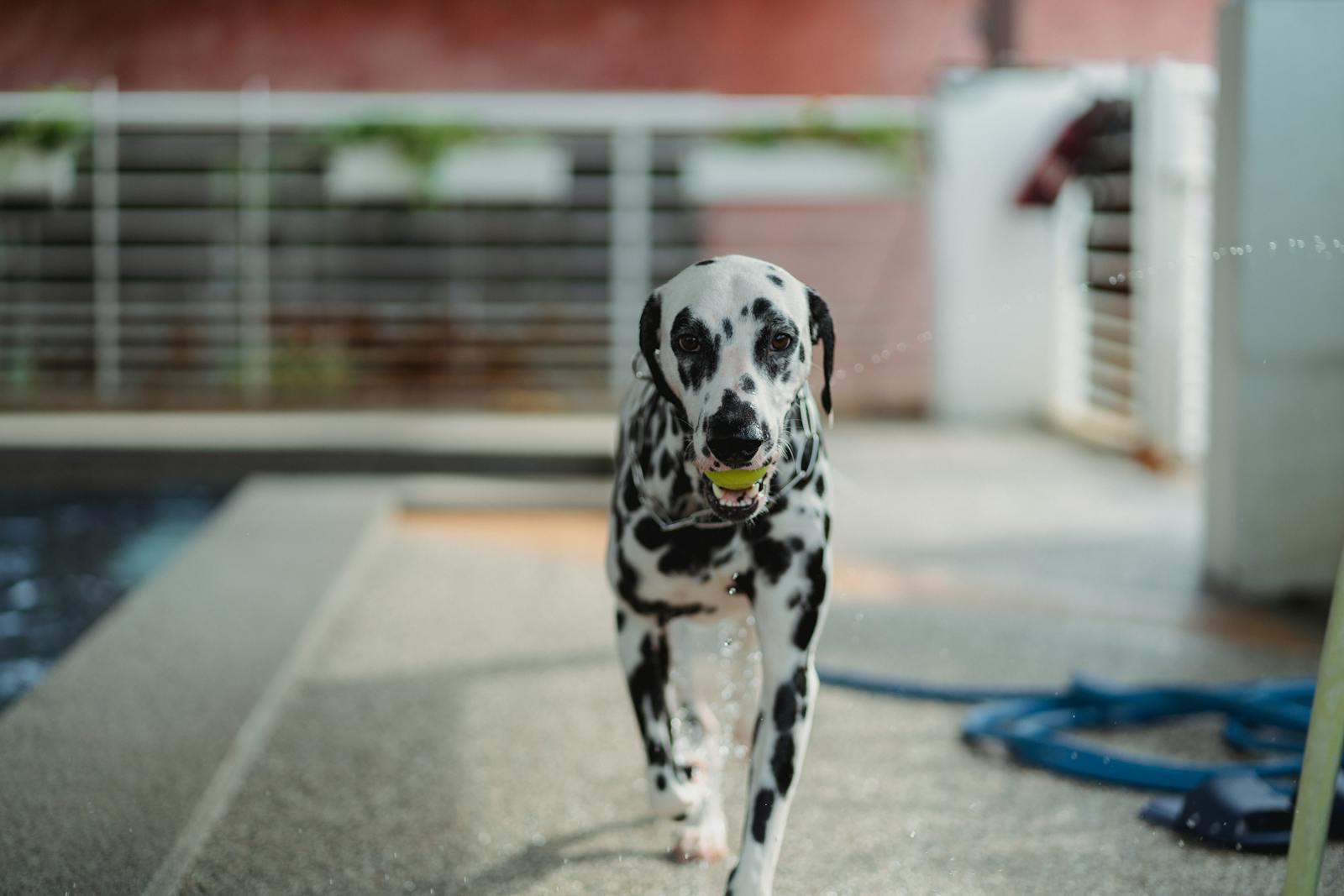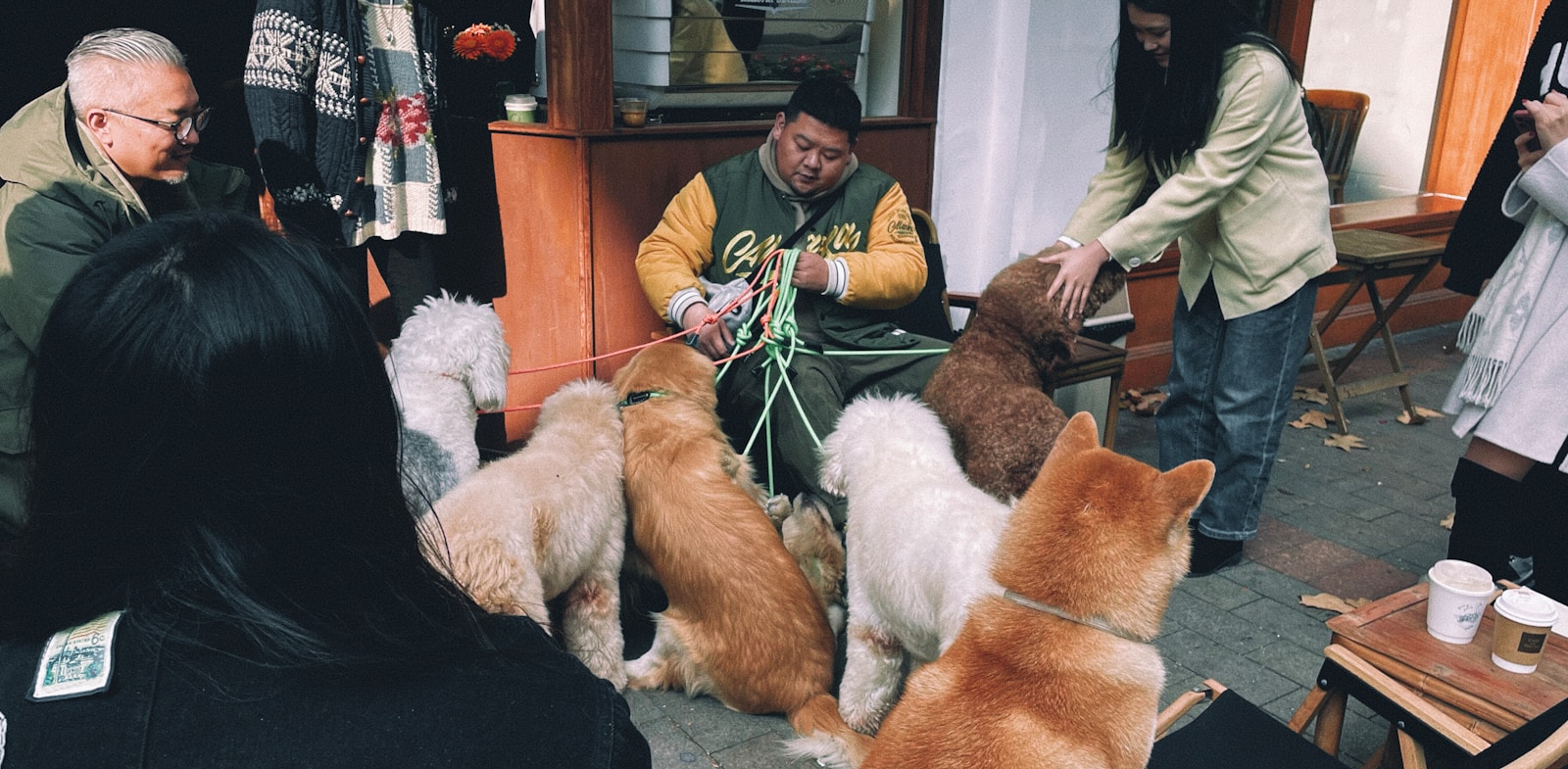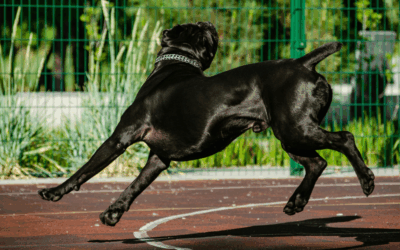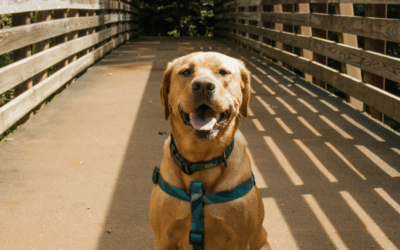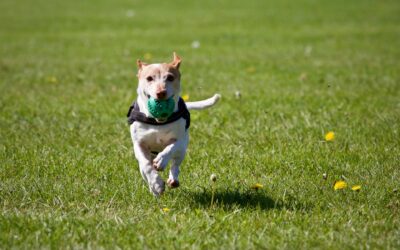Summer brings longer days and warmer weather, making it the perfect time to let your furry friend burn off energy at an indoor dog park. These climate-controlled facilities offer a safe haven from scorching heat while providing essential exercise and socialization opportunities for dogs of all sizes. However, even indoor environments require careful attention to safety during the hottest months of the year.
Dog owners flock to indoor dog parks during summer for good reason. Unlike outdoor spaces where temperatures can soar to dangerous levels, indoor facilities maintain comfortable conditions that protect pets from heat exhaustion and paw burns from hot pavement. But safety extends beyond temperature control. From proper hydration to understanding your dog’s limits, several factors contribute to a successful and safe visit.
This comprehensive guide covers everything you need to know about keeping your pup safe during summer visits to indoor dog parks. You’ll learn essential preparation steps, recognize warning signs of overheating, and discover how to make the most of your facility’s amenities while prioritizing your dog’s wellbeing.
Pre-Visit Preparation for Summer Safety
Vaccination Requirements and Health Checks
Before your first visit to any indoor dog park, ensure your pup meets all health requirements. Most facilities require current vaccinations, including rabies, DHPP, and bordetella. You’ll need to provide proof of these vaccinations, typically in the form of veterinary records.
Summer heat can stress a dog’s immune system, making up-to-date vaccinations even more crucial. Schedule a wellness check with your veterinarian before frequent park visits, especially if your dog has underlying health conditions that might be exacerbated by warm weather.
Many indoor dog parks also require flea and tick prevention treatments. Summer months see increased parasite activity, so maintaining your pet’s preventive care protects both your dog and others in the facility.
Temperament Evaluation and Socialization Readiness
Indoor dog parks can become more crowded during summer as families seek air-conditioned alternatives to outdoor activities. This increased density means your dog needs solid socialization skills to navigate interactions safely.
If your pup is new to group play, consider scheduling a temperament evaluation with the facility staff. Many indoor dog parks offer this service to assess how well your dog interacts with others and identify any behavioral concerns before entry into the main play area.
Start with shorter visits during less busy hours to help your dog acclimate gradually. Early morning weekdays often see fewer crowds, providing a gentler introduction to the indoor dog park environment.
Understanding Your Indoor Dog Park’s Layout and Safety Features Of The Play Area
Separate Areas for Different Dog Sizes
Quality indoor dog parks feature separate play areas designed for different dog sizes and energy levels. Small dog areas typically accommodate pets under 25-30 pounds, while larger spaces host medium to large breeds. This separation prevents injuries that can occur when dogs of vastly different sizes play together.
During summer months, these separate areas become particularly important. Smaller dogs may overheat more quickly than larger breeds, and dedicated small dog parks often have additional cooling features like elevated rest areas and more water stations.
Private Play
Some facilities also offer private play sessions, perfect for dogs who may become overwhelmed in group settings or owners who want to introduce their pets to the space gradually.
Climate Control and Ventilation Systems
Indoor dog parks invest heavily in HVAC systems designed to handle the unique challenges of active dogs in enclosed spaces. Look for facilities that maintain temperatures between 68-72°F year-round, with humidity levels controlled to prevent discomfort.
Proper ventilation removes odors, reduces airborne pathogens, and ensures fresh air circulation throughout the facility. High-quality indoor dog parks use commercial-grade air filtration systems that can handle the increased occupancy typical of summer months.
Pay attention to how the facility manages air flow. Strategic placement of vents and fans helps prevent hot spots where dogs might overheat during active play.

Hydration and Nutrition Guidelines
Water Station Accessibility
Hydration becomes critical during summer, even in air-conditioned environments. Your dog’s body temperature rises during play, and adequate water intake helps maintain proper cooling. Quality indoor dog parks provide multiple water stations throughout the play areas, positioned at heights appropriate for different dog sizes.
Bring a collapsible water bowl if your dog prefers drinking from familiar containers. Some dogs become shy about using communal water bowls, especially in busy environments. Having your own bowl ensures your pup stays hydrated regardless of their comfort level with shared resources.
Monitor your dog’s water intake during visits. Excessive drinking might indicate overheating, while reluctance to drink could signal stress or illness.
Summer Treat and Snack Considerations
Many indoor dog parks feature snack bars where owners can purchase treats for their pets. Summer calls for lighter, more digestible options that won’t upset stomachs during active play. Frozen treats designed for dogs can provide both nutrition and cooling relief.
Avoid feeding your dog large meals immediately before visiting an indoor dog park. Heavy meals can cause discomfort during active play and increase the risk of bloat in susceptible breeds. Instead, offer a light snack 1-2 hours before arrival, then provide treats as rewards during play sessions.
Pack your own treats if your dog has dietary restrictions or preferences. Familiar treats can also serve as positive reinforcement tools if you’re working on training or recall commands during park visits.
Recognizing Signs of Overheating and Stress
Physical Symptoms to Monitor
Even in climate-controlled environments, dogs can overheat during intense play sessions. Watch for excessive panting that doesn’t subside during rest breaks. Normal panting helps dogs regulate temperature, but labored or noisy breathing indicates distress.
Check your dog’s gums regularly during visits. Bright red, pale, or blue-tinged gums signal circulation problems that require immediate attention. Healthy gums should appear pink and feel moist to the touch.
Excessive drooling, particularly thick or ropey saliva, often accompanies overheating. While some drooling is normal during excitement, significant changes in saliva consistency warrant concern.
Behavioral Changes That Signal Distress
Dogs communicate discomfort through behavioral changes that dog lovers must recognize quickly. Sudden lethargy or reluctance to continue playing often indicates your dog needs a break, regardless of how long you’ve been at the facility.
Disorientation, stumbling, or loss of coordination can signal heat exhaustion progressing to heat stroke. Remove your dog from the play area immediately and seek cooling measures if you observe these symptoms.
Vomiting or diarrhea during or shortly after park visits may indicate stress, overheating, or dietary issues. These symptoms require immediate attention and possibly veterinary care.

Maximizing Safety Features and Amenities
Utilizing Rest Areas and Quiet Zones
Well-designed indoor dog parks include designated rest areas where dogs can decompress between play sessions. These spaces often feature comfortable surfaces, climate control, and reduced noise levels to help dogs recover from intense activity.
Use rest areas strategically during your visit. Plan breaks every 15-20 minutes of active play, especially for older dogs, puppies, or breeds prone to breathing difficulties. These breaks allow your dog’s body temperature to normalize and prevent exhaustion.
Some facilities offer separate quiet zones for dogs who become overwhelmed by group play. These areas provide socialization opportunities without the intensity of main play areas, perfect for gradual introduction to the indoor dog park environment.
Grooming and Cleaning Stations
Summer visits to indoor dog parks often result in sweaty, tired pups who benefit from quick cleanup before heading home. Many facilities provide dog washing stations equipped with appropriate shampoos and drying equipment.
Post-play grooming helps remove allergens, bacteria, and odors your dog may have picked up during socialization. It also provides an opportunity to check for any minor injuries or skin irritations that occurred during play.
Some indoor dog parks offer professional grooming services, perfect for combining exercise with routine maintenance. Scheduling grooming after play sessions ensures your dog is clean and comfortable for the car ride home.
Creating Safe Summer Routines
Timing Your Visits for Optimal Conditions
Summer schedules often become more flexible, but strategic timing of indoor dog park visits enhances safety and enjoyment. Early morning hours typically see fewer crowds, lower stress levels, and easier monitoring of your individual dog’s behavior.
Avoid peak hours when possible, particularly during hot summer afternoons when outdoor alternatives are limited. Crowded conditions can lead to overstimulation, increased competition for resources, and higher stress levels for both dogs and owners.
Consider your dog’s natural energy patterns when planning visits. Some dogs perform better with morning exercise, while others prefer afternoon or evening activities. Matching park visits to your dog’s biological rhythms improves the experience for everyone.
Building Familiarity with Staff and Regular Dogs
Establishing relationships with facility staff provides additional safety monitoring for your dog. Experienced staff members can spot potential problems early and offer guidance on managing your dog’s behavior during visits.
Regular attendance helps your dog develop friendships with other frequent visitors, reducing stress and improving social interactions. Familiar playmates often engage in safer, more predictable play patterns than encounters with completely new dogs.
Dog Training Options
Ask staff about special summer programs or events designed for specific dog types or training levels with agility equipment. These structured activities can provide enrichment while maintaining safety standards appropriate for the season.
Emergency Preparedness and Response
Knowing When to Leave
Recognizing when to end a park visit protects your dog’s health and safety. Signs that indicate immediate departure include persistent panting after rest breaks, reluctance to drink water, or any symptoms of distress mentioned earlier.
Don’t feel obligated to stay for a predetermined length of time. Some days your dog may need shorter visits due to weather sensitivity, health fluctuations, or simply having an off day. Responsive ownership means adapting to your pet’s current needs.
Trust your instincts about your dog’s condition. You know your pet better than anyone else, and early intervention prevents minor concerns from becoming serious problems.
Basic First Aid Knowledge
Every dog owner visiting indoor dog parks should understand basic first aid principles. Learn how to safely cool an overheated dog using gradual methods rather than shocking temperature changes that can cause additional problems.
Keep emergency contact information readily available, including your veterinarian’s number and the location of the nearest emergency animal hospital. Many indoor dog parks maintain relationships with local veterinary clinics and can provide recommendations if needed.
Understand how to safely separate dogs if play becomes too rough. Proper intervention techniques protect all involved animals while preventing the escalation of conflict.

Making the Most of Summer Indoor Dog Park Visits At Snouts and Stouts Indoor Dog Park And Bar
Summer visits to indoor dog parks like Snouts and Stouts Indoor Dog Park and Bar offer unique opportunities for enrichment, socialization, and exercise in a controlled environment—especially when it’s too hot to walk your dog. By prioritizing safety through proper preparation, careful monitoring, and responsive ownership, you create positive experiences that benefit both you and your furry friend.
Why Snouts and Stouts Indoor Dog Park and Bar is Perfect for Both Canines and Owners
Snouts and Stouts is more than just your average indoor dog park—it’s a haven for both dogs and their owners. For canines, the space is designed with their enjoyment and safety in mind. With plenty of room to run, play, and socialize, your pup will have a chance to burn off energy while interacting with other dogs. The park is climate-controlled, ensuring a comfortable environment regardless of the weather outside. Additionally, the facility is regularly cleaned and maintained to high standards, promoting the health and safety of all visiting pups.
For humans, Snouts and Stouts offers a unique blend of fun and relaxation. While your dog enjoys their time, you can kick back at the on-site bar with a refreshing drink in hand. The bar features a selection of craft beers, wines, and non-alcoholic beverages, making it a great place to unwind and socialize with fellow pet parents. The welcoming atmosphere encourages community connections, creating a space where both dogs and their owners feel at home. Whether you’re looking for a place to exercise your pup, meet new friends, or simply relax, Snouts and Stouts has something for everyone.
Products to Take to the Dog Park
Here’s a curated list of essential products and brands you should consider bringing to the dog park to ensure your furry friend has the best experience possible:
Chuckit! Launcher
Perfect for playing fetch, this ball launcher allows you to effortlessly throw balls farther, keeping your dog energetic and engaged.
Kurgo Dog Travel Bowl
A collapsible and portable bowl ideal for keeping your dog hydrated during playtime. Durable and easy to clean.
Earth Rated Dog Waste Bags
Eco-friendly and reliable poop bags that make cleaning up after your dog simple and environmentally-conscious.
KONG Classic Dog Toy
A versatile and durable chew toy that can also be stuffed with treats to keep your dog entertained during quieter moments.
Ruffwear Front Range Harness
A comfortable and secure harness that’s perfect for walks to and from the park, providing safety and control.
ZippyPaws Rope Tug Toys
Great for interactive play, these durable rope toys are perfect for games of tug-of-war with your dog.
Ruffwear Knot-a-Leash
A strong, climbing-inspired leash with a secure locking carabiner, perfect for keeping your dog close in busy spaces.
With these high-quality products, your trips to the dog park will be filled with fun, comfort, and convenience for both you and your pup!
Remember that each dog is unique, and what works for one pet may not suit another. Pay attention to your dog’s individual responses to indoor dog park environments and adjust your approach accordingly. The goal is creating enjoyable experiences that enhance your dog’s quality of life while maintaining their health and safety.
Plan your next visit to an indoor dog park with these safety guidelines in mind with your best friends. Your preparedness and attention to detail will help ensure that summer fun remains safe and memorable for both you and your beloved companion.
